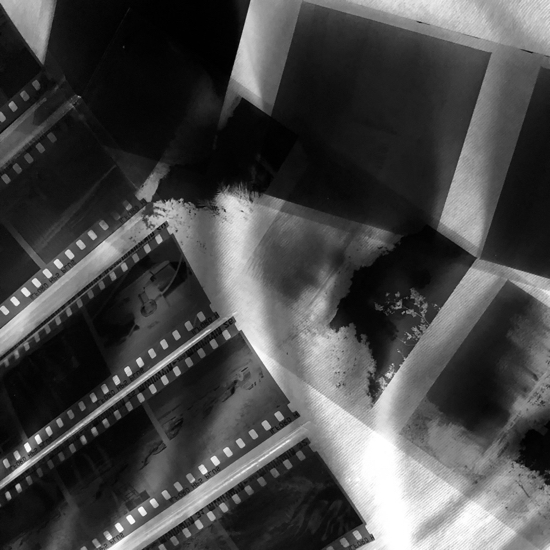The DSLR vs Mirrorless Debate is Silly, Here's Why (DL Cade, PetaPixel)
Before the smartphone there were digital cameras. Simple at first, the DSLR appeared in the late 1980s. I first tried an early Kodak DSLR in about 1990. Around that time I also tested a small Logitech digital camera with monochrome output. Although the price and simplicity showed some promise, chips were soon available for color and a wide range of digital cameras became available. I picked up a small Sony device and produced some good (JPEG-only) photographs. Many use the term, JPEG (or JPG) without realizing this is an acronym that stands for Joint Photographic Experts Group: a committee that maintains the standard. I am more likely to use TIFF (Tagged Image File Format): a raster format originally developed by Aldus. As I teach my students, these acronyms (HEIC, DNG, NEF, PDF, et al) have meaning.
The first DSLR camera I owned was a Nikon D70 which I bought in 2005 (I still have its replacement D70s). It was the first DSLR camera from Nikon's factory in Thailand. Its 6.1MP sensor was smaller than the 12 MP of my current iPhone, although sensor size of the DSLR has evolved considerably. I moved later to a Nikon D7000 and my collection of lenses grew.
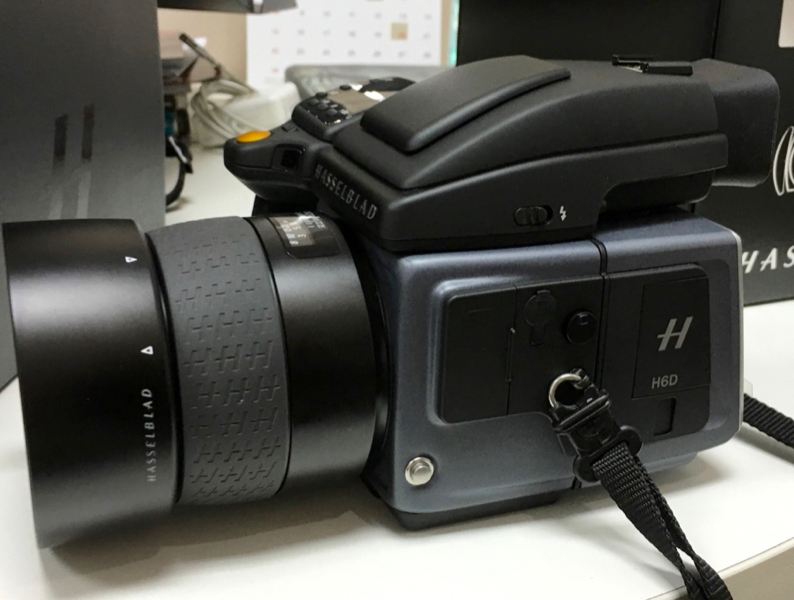
Hasselblad H6D-50
In May 2016 I tested a Hasselblad H6D-50C and was impressed with its 50MP sensor. I may not be able to afford the latest Hasselblads, but when the Nikon D850 was released with its 45.7MP sensor, I went for this as soon as I could. As well as the H6D-50C Hasselblad also has the H6D-100C and Phase One has recently put out its XF IQ4 with a 150MP sensor. In context, this is $52,000 while the H6D-100C is $33,000 and my Nikon D850 (also made in Thailand) was 125,000 baht ($4,100). It is lower-priced now and can be bought for $2,300 online. Lenses for all of these cameras are extra.
As the sensors have become larger, so image file size has also increased. When I tried the Hasselblad, my own software was unable to handle the RAW output, so I installed Hasselblad's own Phocus and still use this from time to time. RAW images from the D850 are around 95MB each (8256 x 5504). Apple's Aperture - now no longer supported - was unable to handle the specific RAW format, so I had to make some changes. Part of the reason for buying the D850 as soon as it was available here was that tryout of the Hasselblad. The 50MP CMOS (8772 x 6200) was a signal to me of the value of larger sensors. As much as I would like the H6D-50C or the H6D-100C or the mirrorless Hasselblad X1D-50c ($5999), they are beyond my reach. The Nikon does me well, although I do have older Hasselblad (film) cameras.
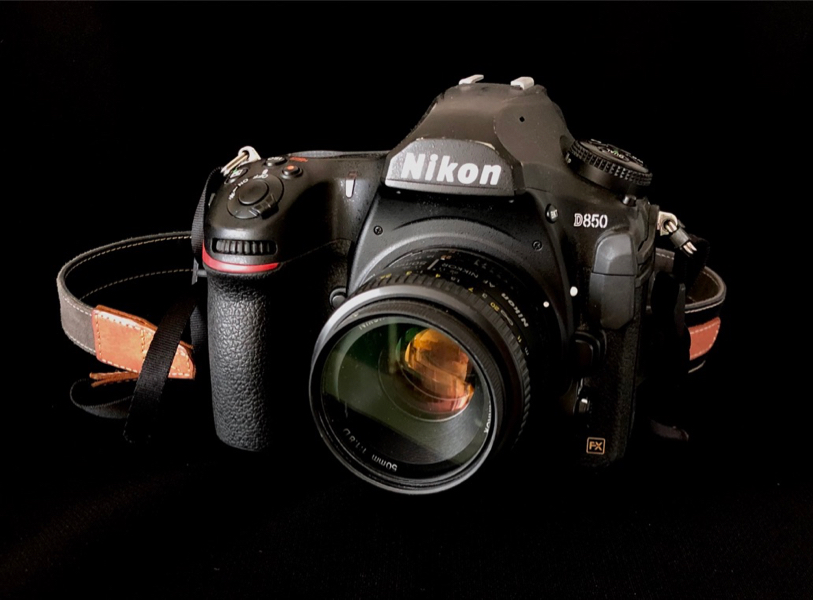
Nikon D850
The arrival of the smartphone and mirrorless cameras are factors in the contraction of DSLR camera sales which peaked around 2012. Last year was the worst year of the decade Gannon Burgett (DPReview). With the increase in popularity of film cameras, however the new formats are clearly not the entire reason for the shift away from the DSLR. If output is only used for social networking sites, such as Facebook or Instagram, there is less need for many consumers to buy large cameras when the smartphone is capable of acceptable output. With the continued success of companies like Hasselblad, PhaseOne and Leica, my view (not widely held) is that the more traditional camera makers (Canon, Fuji, Nikon, Sony) need to consolidate: reduce the numbers of low-end devices and focus on high end cameras.
Nikon has the D850 and the mirrorless Z7, both with the 47MP sensor, Fuji has the GFX 100 (Sony sensor). Canon launches Canon EOS 1DX Mark III (20.1 MP) with $11,299 price tag Dion Siswadi (CravingTech). In an article on Nikon, I was slightly confused, then irked by a comment on the need for its 45mp sensor. The argument put forward was that, as Nikon lists some of its lenses that do not provide resolution above 36mp (also listing some that do), a 45 MP sensor is wasted (Nasir Mansurov, Photography Life). There was a healthy discussion after the article. See also, Jaron Schneider (Petapixel): Perfect is Boring: Lens Makers Need to Loosen Up and Have Fun.
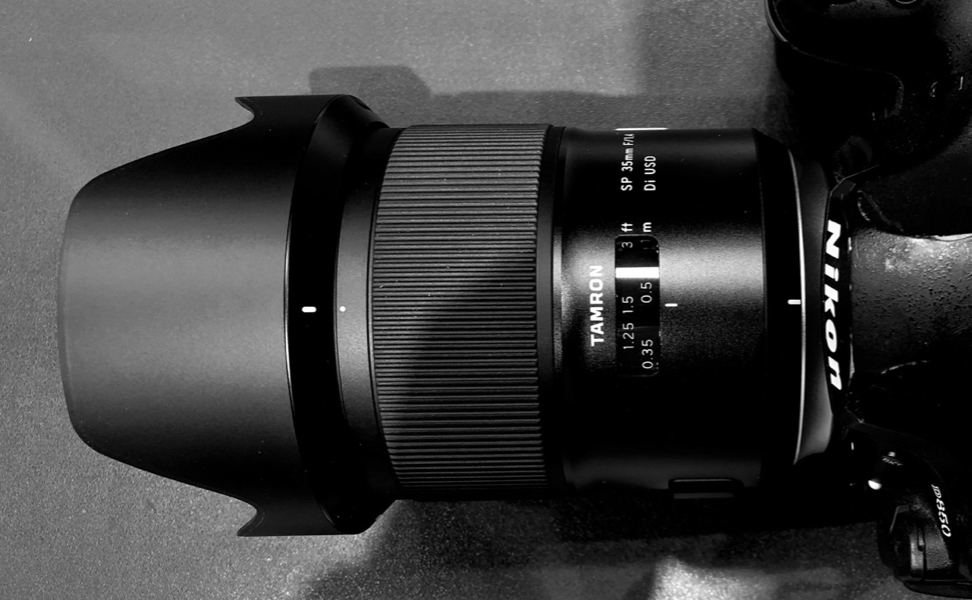
High quality Tamron 35mm f/1.4 SP Lens
Note that some of the Nikkor lenses do produce higher resolution; and there is only a limited mention of 3rd party lenses. Some lenses do not provide sufficient resolution to benefit from the 45MP sensors, but there is also the future to consider: most of my lenses, for example, have autofocus, but many older lenses I own do not. We may therefore anticipate future lens development which could include higher resolution. If Fuji, Hasselblad, Sony have 100MP sensors, why should Nikon or any other camera maker be excluded?
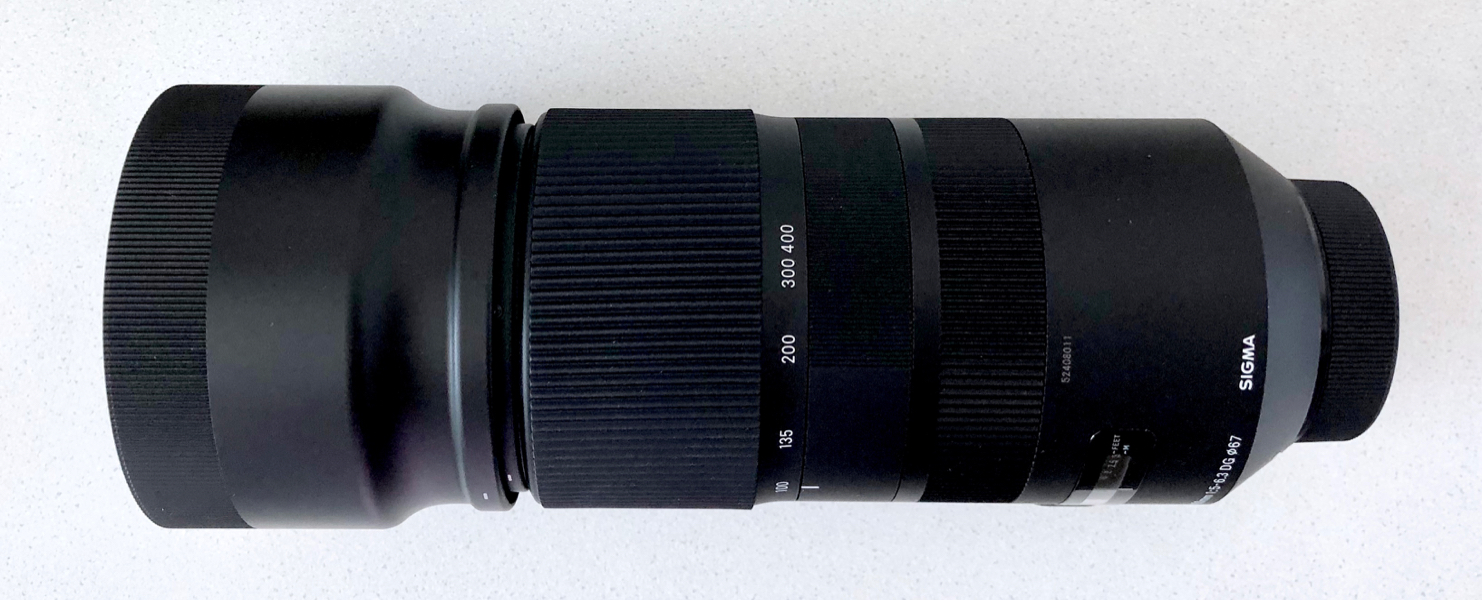
Sigma 100-400 Telephoto Lens
Reducing the number of models at the lower end (keeping reduced numbers of Entry-level and Mid-level options) and pushing high-end cameras would certainly cause the companies to contract, but there is a need for pragmatism in a contracting market. While there will be some adjustments also regarding the increased sales of Mirrorless cameras, particularly to new users, I am of the opinion that the DSLR still has several years life left.
As with output from the iPhone (especially RAW images) photos from DSLR cameras will benefit from editing in almost all cases. Most of the time I use software on the Mac. I have steered clear of Adobe products, apart from a small test of Lightroom when it first appeared. As I was already using Aperture I stuck with that. I am disappointed that Apple no longer supports this application.
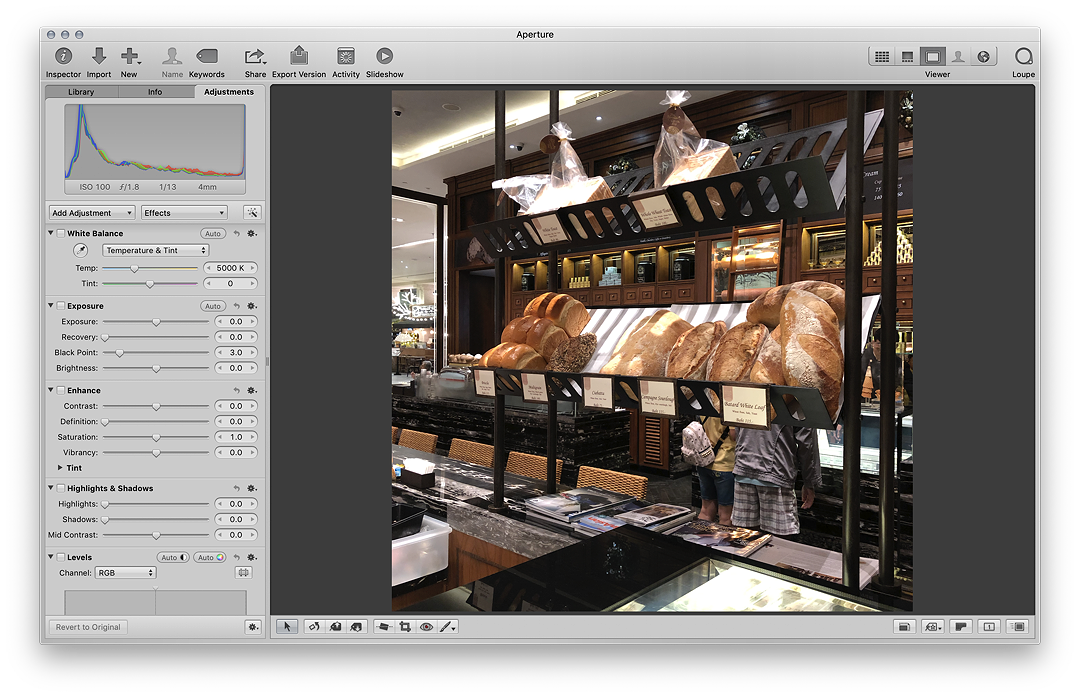
The much-missed Aperture
Nonetheless I have a good number of other apps to choose from: Graphic Converter, Affinity Photo, Luminar, Pixelmator Pro, and Polarr Photo Editor Pro. At a pinch I even have the Open Source, Gimp. I have also tried ON1 Photo RAW, Hasselblad Phocos, and several other applications some of which have specific uses (like Waterlogue).
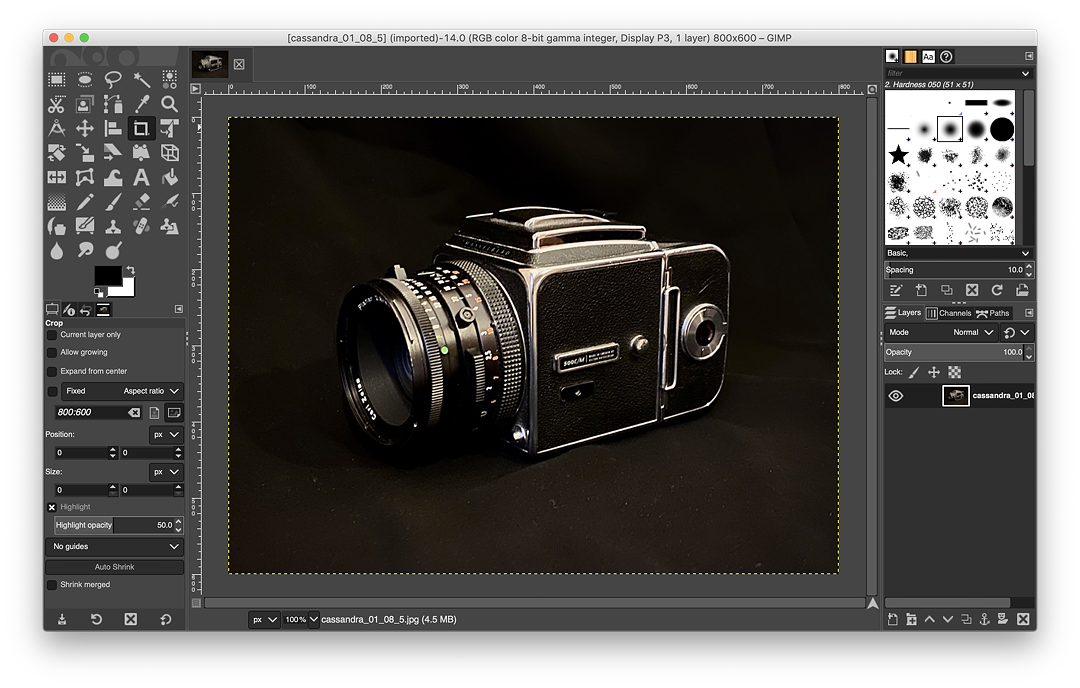
The Open-source GIMP
My main problem with the end-life of Aperture was less the useful editing tools, but the workflow and image management. No other application has suited my requirements which include synchronization my to other devices (iPhone, iPad, Macs), so I reluctantly use Apple's Photos which seems to cope, along with iCloud. Although I have had a synchronization problem with the iPhone 11 Pro which began with the iOS13.2 update, that is now fixed with the help of Apple Support. Other devices were unaffected.
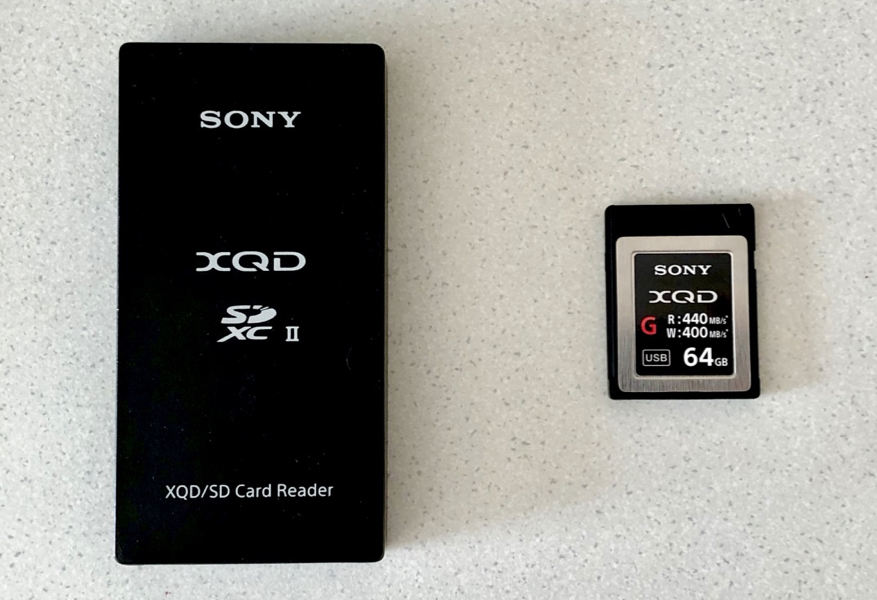
64 GB XQD card and XQD card reader
With DSLR cameras I had always imported images to the Mac using an SD card. The Nikon D850 uses SD and XQD cards. I now favour a direct link to the Mac, with a (hard to find in Thailand) micro-USB to USB-C cable. The latest Hasselblads and the Nikon Z-series have USB-C ports. Importing with the cable connection is easier and if I want I can also use tethering software, such as Smart Shooter 3 and Sofortbild. I also download some of the DSLR output to the iPad Pro using the same cables, although that limits the number that can be imported at any one time (about 10-15). If I go out for a day, a download of 200-300 images needs the Mac. Also missing from the iPad Pro is suitable tethering software and the ability to use a flatbed scanner (see Part 3, Film and Cameras).
With Photos, Apple aims at the consumer with features like Faces, Moments and Places. In Aperture, I had always organized my images in chronological order and also used Projects and Folders at the time of import. Photos does this a little differently, but it is fairly easy to create and order these (Folders and Albums), although the interface is less friendly in this aspect. Over time I have become insulated to this. The folders and albums do synchronize to the other devices so that helps with workflow.
Although I have several applications for photo editing, I like to keep this simple: there is no rescuing a bad picture; but certain attributes can be brought out more by effective editing, particularly Exposure, Contrast, Highlights, Shadows and Sharpening. If I am using color, I may use Saturation (or Selective Color), but this needs care: over-saturation is not as effective as some seem to think. Cropping may also be useful with some images.
Film, however, has different requirements and the relationship with the digital world concerns not only editing an image, but scanning a negative so that it is available for such manipulation.
See also:
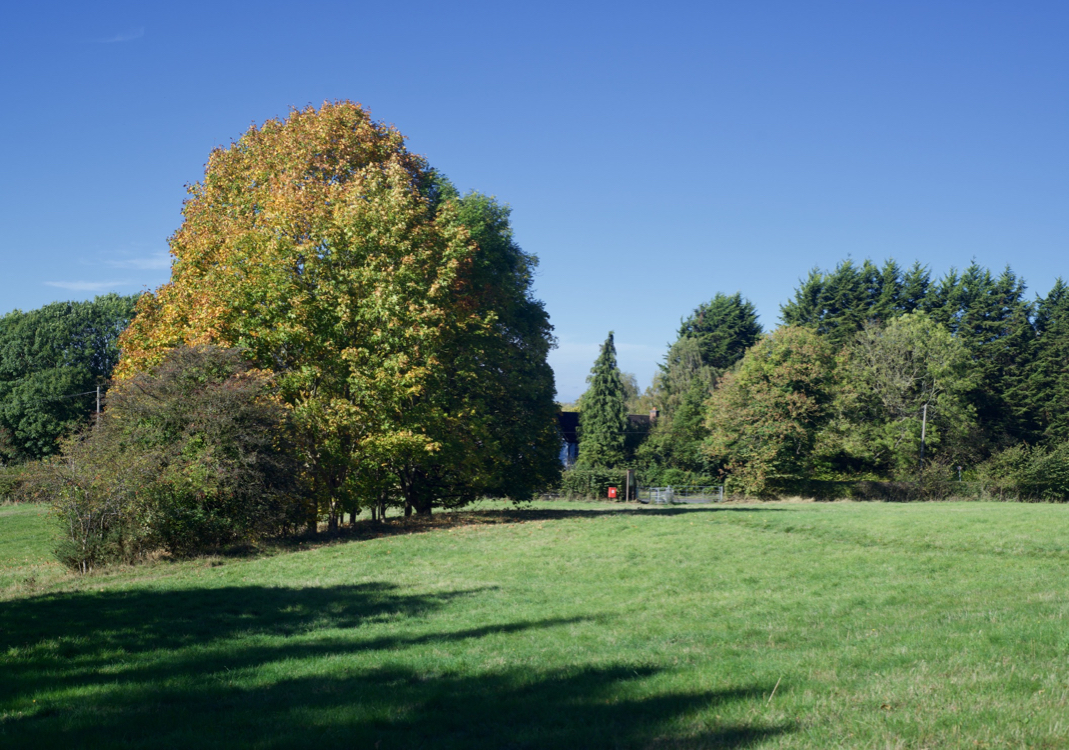
UK landscape - D850 using 50mm lens
Graham K. Rogers teaches at the Faculty of Engineering, Mahidol University in Thailand. He wrote in the Bangkok Post, Database supplement on IT subjects. For the last seven years of Database he wrote a column on Apple and Macs. After 3 years writing a column in the Life supplement, he is now no longer associated with the Bangkok Post. He can be followed on Twitter (@extensions_th)









